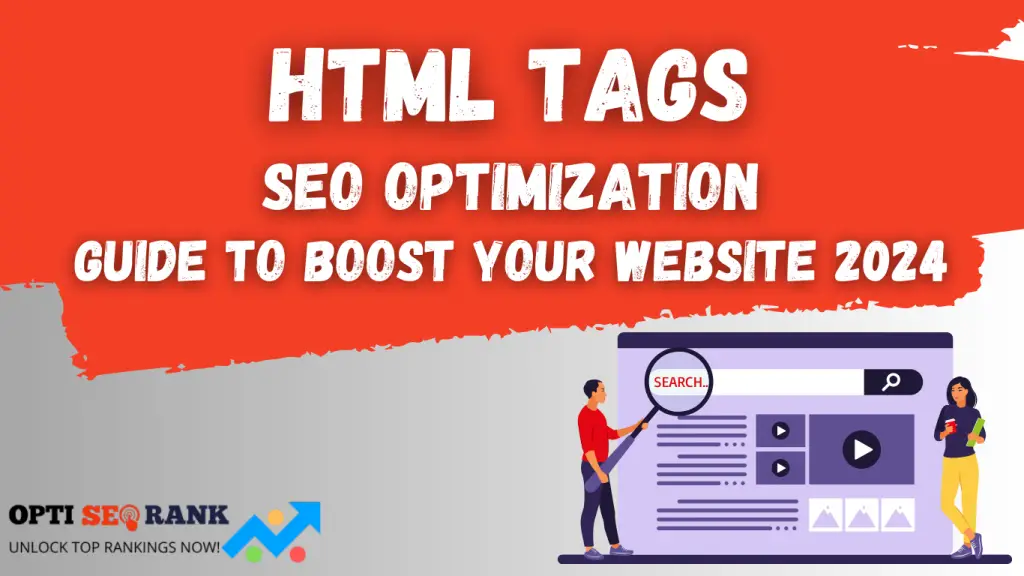Advanced mobile SEO focuses on optimizing your website for mobile devices to ensure peak performance. It enhances user experience and improves search engine rankings.
Mobile SEO is essential in today’s digital landscape. With the majority of users accessing websites via mobile devices, optimizing for mobile has never been more crucial. Fast loading times, responsive design, and user-friendly navigation contribute to a seamless mobile experience.
Search engines prioritize mobile-friendly websites, so a well-optimized mobile site can significantly improve your search rankings. This not only attracts more visitors but also keeps them engaged. Effective mobile SEO involves regular monitoring and updates to maintain high performance. By focusing on mobile optimization, businesses can stay competitive and meet the needs of their mobile audience.
Introduction To Advanced Mobile Seo
Advanced Mobile SEO is vital for ensuring your website’s peak performance on mobile devices. With mobile usage surpassing desktop, optimizing for mobile search is crucial.
Importance Of Mobile Seo
Mobile SEO ensures your site is user-friendly on mobile devices. This leads to better user experience and higher engagement rates.
- Better User Experience: A mobile-optimized site loads faster and is easier to navigate.
- Higher Search Rankings: Google prioritizes mobile-friendly sites in search results.
- Increased Traffic: More users access the internet via mobile devices.
Current Trends In Mobile Search
Keeping up with current trends in mobile search is essential for staying competitive.
| Trend | Description |
| Voice Search: | More users use voice assistants for search queries. |
| Local SEO: | Mobile users often search for local businesses. |
| AMP (Accelerated Mobile Pages): | AMP ensures faster loading times for mobile users. |
Use these trends to guide your mobile SEO strategy. Focus on voice search by optimizing for natural language queries. Improve your local SEO by claiming your Google My Business listing. Utilize AMP to ensure your pages load quickly.
Mobile-friendly Website Design

In the world of Advanced Mobile SEO, having a mobile-friendly website design is crucial. It ensures that users have a seamless experience, regardless of the device they use. A mobile-friendly site boosts your search engine rankings and keeps visitors engaged.
Responsive Design Principles
A responsive design adapts to various screen sizes. It ensures content looks great on all devices. Follow these principles:
- Use fluid grids to create flexible layouts.
- Apply media queries for different screen sizes.
- Opt for flexible images and media.
- Ensure touch-friendly navigation elements.
These principles make your site look professional. They also improve user interaction.
User Experience Optimization
User experience (UX) is vital for mobile SEO. A good UX keeps visitors on your site longer. Follow these tips:
- Fast Loading Speed: Ensure your site loads in under 3 seconds.
- Readable Text: Use larger fonts for better readability.
- Accessible Buttons: Make buttons large enough to tap easily.
- Simplified Navigation: Use a clean, intuitive navigation menu.
Improving UX leads to higher user satisfaction. It also reduces bounce rates.
Accelerated Mobile Pages (amp)

Accelerated Mobile Pages (AMP) is a technology that improves mobile web performance. AMP ensures pages load faster on mobile devices. This speed can significantly enhance the user experience.
Benefits Of Amp
- Improved Page Load Speed: AMP pages load almost instantly.
- Better Mobile Experience: Users enjoy a smoother browsing experience.
- Higher Engagement: Faster pages can lead to increased user interaction.
- Boosted SEO: Google favors AMP in search results, improving visibility.
Implementing Amp
Implementing AMP on your website involves a few steps. Follow this guide to ensure a smooth setup:
- Install the AMP Plugin: Use plugins like AMP for WP.
- Validate Your Pages: Use the AMP Validator to check your pages.
- Optimize Content: Ensure all content is AMP-compatible.
- Monitor Performance: Use tools like Google Analytics to track AMP performance.
Amp Compatible Content
Ensure your website content is AMP-compatible by following these guidelines:
| Content Type | AMP-Compatible Elements |
| Images | for images. |
| Videos | for videos. |
| Ads | for advertisements. |
By implementing AMP, your website can achieve peak mobile performance. Users will enjoy a faster, more engaging experience.
Site Speed Optimization
Site Speed Optimization is crucial for mobile SEO. Faster sites rank higher and provide a better user experience. This section will cover the impact of speed on SEO and techniques to improve speed.
Impact Of Speed On Seo
Site speed directly affects search engine rankings. Google considers load time as a ranking factor. A faster site improves user engagement and reduces bounce rates. Slow sites frustrate users and lead to higher exit rates. Faster sites also lead to more page views.
Techniques To Improve Speed
Several techniques can improve site speed. Below are some effective methods:
- Optimize Images: Use compressed images without sacrificing quality.
- Minify CSS, JavaScript, and HTML: Remove unnecessary characters to speed up load times.
- Enable Browser Caching: Store resource files locally for faster loading.
- Use a Content Delivery Network (CDN): Distribute content across multiple servers for quicker access.
- Reduce Server Response Time: Use a faster hosting solution to decrease latency.
Implementing these techniques can significantly improve your site speed. Faster sites offer a better experience and higher rankings.
| Technique | Benefit |
| Optimize Images | Faster load times |
| Minify CSS, JS, and HTML | Smaller file sizes |
| Enable Browser Caching | Quick resource access |
| Use a CDN | Reduced latency |
| Reduce Server Response Time | Better performance |
Mobile-first Indexing
Mobile-First Indexing prioritizes mobile versions of websites in search rankings. Optimizing for this ensures faster load times and better user experience on mobile devices. Advanced Mobile SEO techniques are essential for maintaining peak performance.
Mobile-First Indexing is Google’s approach to prioritize mobile versions of websites. This means Google uses mobile versions to rank pages. Adapting to this change is crucial for SEO success.
Understanding Mobile-first
Mobile-First means Google mainly uses the mobile version of content. This is for indexing and ranking. This change reflects the growing number of mobile users. Websites must be mobile-friendly to rank well.
Key points to understand:
- Google uses mobile content first.
- Mobile usability impacts rankings.
- Responsive design is important.
- Page speed matters more on mobile.
Preparing Your Site
To prepare your site for Mobile-First Indexing, follow these steps:
- Responsive Design: Ensure your site adjusts to different screen sizes.
- Fast Loading: Optimize images and use quick-loading plugins.
- Content Parity: Make sure your mobile site has the same content as the desktop site.
- Mobile Usability: Ensure buttons and links are easy to click on mobile devices.
Consider using the following tools: ToolPurposeGoogle Mobile-Friendly TestCheck if your site is mobile-friendly.PageSpeed InsightsAnalyze and optimize page speed.Google Search ConsoleMonitor mobile usability issues.
Ensuring your site is optimized for mobile-first indexing is essential. Focus on the key areas mentioned above. This will improve your rankings and user experience.
Voice Search Optimization
Voice Search Optimization is a crucial aspect of Advanced Mobile SEO. With the increasing use of voice assistants, optimizing for voice queries can enhance your website’s visibility and user experience. Let’s delve into the key aspects of voice search optimization and ensure your content aligns with user needs.
Rise Of Voice Search
The use of voice search has grown rapidly. Users prefer speaking over typing. Voice assistants like Siri, Alexa, and Google Assistant make searches quick and easy. This trend highlights the need for businesses to adapt their SEO strategies.
Statistics show a significant rise in voice search usage:
| Year | Percentage of Voice Searches |
| 2018 | 20% |
| 2020 | 30% |
| 2023 | 50% |
Optimizing For Voice Queries
To optimize for voice search, focus on natural language and conversational tones. Voice searches are often phrased as questions. Consider including question-based keywords in your content. Examples include “How to”, “What is”, and “Best ways”.
Here are some essential tips:
- Use Long-Tail Keywords: Voice queries are usually longer. Incorporate long-tail keywords that match natural speech patterns.
- Answer Questions Directly: Provide clear and concise answers to common questions. This improves your chances of appearing in featured snippets.
- Optimize for Local Searches: Many voice searches are location-based. Ensure your business information is accurate and complete on local directories.
- Improve Page Speed: Fast-loading pages are crucial for mobile and voice search. Compress images, leverage browser caching, and minimize redirects.
- Utilize Structured Data: Implement schema markup to help search engines understand your content better.
Here’s a sample code snippet for adding structured data:
{
“@context”: “https://schema.org”,
“@type”: “FAQPage”,
“mainEntity”: [{
“@type”: “Question”,
“name”: “What is voice search optimization?”,
“acceptedAnswer”: {
“@type”: “Answer”,
“text”: “Voice search optimization is the process of optimizing your content to appear in voice search results.”
}
}]
}
Implementing these strategies can significantly improve your site’s performance in voice search results. Stay ahead by continuously updating your SEO practices to align with evolving trends.
Local Seo For Mobile
Local SEO for mobile devices is crucial. Mobile users often search for services nearby. Optimizing your site for local searches can drive more traffic. It connects your business with local customers.
Importance Of Local Seo
Local SEO improves your visibility in local searches. Mobile searches often show local results first. This means local SEO can bring more customers. It helps in ranking higher in search results.
Local SEO boosts your business’s online presence. It ensures that local customers find you easily. This can lead to more foot traffic to your store. It enhances user experience by providing relevant results.
Tactics For Local Mobile Search
Implementing local SEO tactics can make a big difference. Here are some effective strategies:
| Tactic | Description |
| Google My Business | Create and optimize your Google My Business listing. |
| Local Keywords | Use local keywords in your content and meta tags. |
| Online Reviews | Encourage customers to leave positive reviews online. |
| Mobile-Friendly Website | Ensure your website is mobile-friendly and loads quickly. |
| Local Backlinks | Get backlinks from local websites and directories. |
Use these tactics to improve your local search rankings. It helps in attracting local customers. Google My Business is essential. Ensure your business information is accurate and complete.
Local keywords are important. Include the name of your city or neighborhood. This helps search engines understand your location. Online reviews build trust. They also improve your local rankings.
A mobile-friendly website is crucial. It ensures a good user experience. Local backlinks from trusted sources can boost your SEO. These links signal to search engines that your site is relevant.
Mobile Seo Tools And Resources
Optimizing your website for mobile devices is crucial. Mobile SEO tools and resources help achieve peak performance. These tools assist in understanding how your site performs on mobile devices. They provide insights to improve user experience and search engine rankings.
Essential Tools
To enhance mobile SEO, various tools are available. Here are some must-have tools for every SEO expert:
- Google Search Console: Monitors your site’s mobile performance.
- PageSpeed Insights: Analyzes and suggests improvements for page speed.
- Mobile-Friendly Test: Checks if your site is mobile-friendly.
- Screaming Frog SEO Spider: Crawls websites to identify SEO issues.
- GTmetrix: Provides detailed performance reports.
Staying Updated
SEO is always changing. Staying updated with the latest trends is vital. Here are some resources to keep you informed:
- Google Webmaster Central Blog: Offers official updates and tips.
- Moz Blog: Shares in-depth SEO articles and guides.
- Search Engine Journal: Provides the latest industry news.
- SEO Roundtable: Discusses daily search engine news and trends.
- Twitter: Follow industry leaders for real-time updates.
Using these tools and resources ensures your site remains competitive. Regular updates and optimizations are essential for maintaining high performance.
Measuring Mobile Seo Success
In the world of Advanced Mobile SEO, knowing how to measure success is crucial. Understanding the right metrics and analyzing performance helps ensure your mobile site is at its best.
Key Metrics
Tracking the right key metrics is essential for mobile SEO success. Here are some important metrics to focus on:
- Mobile Traffic: The number of visitors accessing your site from mobile devices.
- Page Load Time: The time it takes for a page to fully load on a mobile device.
- Bounce Rate: The percentage of visitors who leave after viewing only one page.
- Click-Through Rate (CTR): The percentage of users who click on a link from search results.
- Conversion Rate: The percentage of visitors who complete a desired action, like making a purchase.
Analyzing Performance
Once you’ve identified the key metrics, it’s time to analyze the performance. Here’s a simple guide to help you:
- Collect Data: Use tools like Google Analytics to gather data on your key metrics.
- Compare Metrics: Look at how your mobile metrics compare to desktop metrics.
- Identify Trends: Spot any patterns or trends in the data over time.
- Evaluate Changes: Determine the impact of any changes you’ve made to your mobile site.
- Adjust Strategies: Based on your findings, tweak your SEO strategies for better results.
| Key Metric | Ideal Value |
| Mobile Traffic | High and Increasing |
| Page Load Time | Under 3 Seconds |
| Bounce Rate | Low (Under 40%) |
| Click-Through Rate (CTR) | High |
| Conversion Rate | High |
By focusing on these metrics and analyzing performance, you can ensure your mobile site performs at its peak.
Frequently Asked Questions
Does Mobile Optimization Help Seo?
Yes, mobile optimization significantly boosts SEO. It enhances user experience, increases site speed, and improves search engine rankings.
What Is The Difference Between Basic And Advanced Seo?
Basic SEO involves optimizing website content, meta tags, and keywords. Advanced SEO includes technical aspects, backlink strategies, and detailed analytics.
How To Use Advanced Search Engine Optimization?
Use advanced SEO by optimizing keywords, creating quality content, improving site speed, building backlinks, and using analytics tools.
What Is Mobile Seo Ranking?
Mobile SEO ranking refers to how well a website performs on search engines when accessed from mobile devices. It involves optimizing for mobile usability and speed.
Conclusion
Achieving advanced mobile SEO ensures your site stays competitive and performs at its best. Focus on responsive design, fast loading times, and user-friendly navigation. Implement these strategies to boost your mobile search rankings. Keep optimizing to stay ahead in the ever-evolving digital landscape.
Your efforts will lead to increased traffic and user satisfaction.



